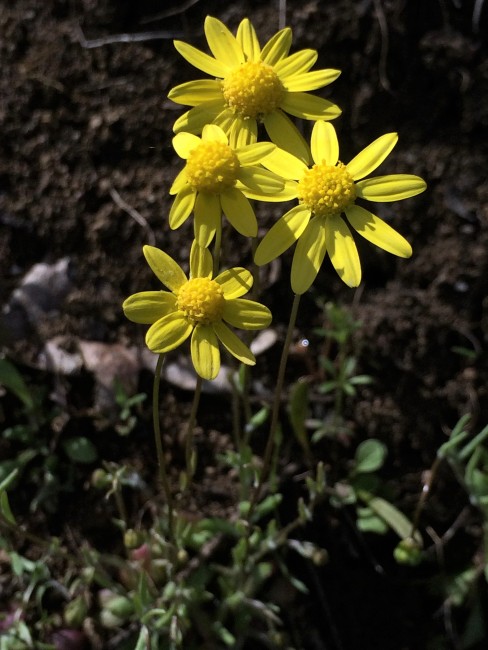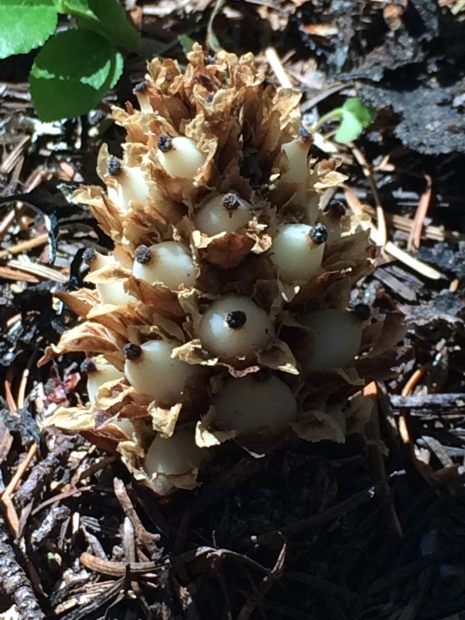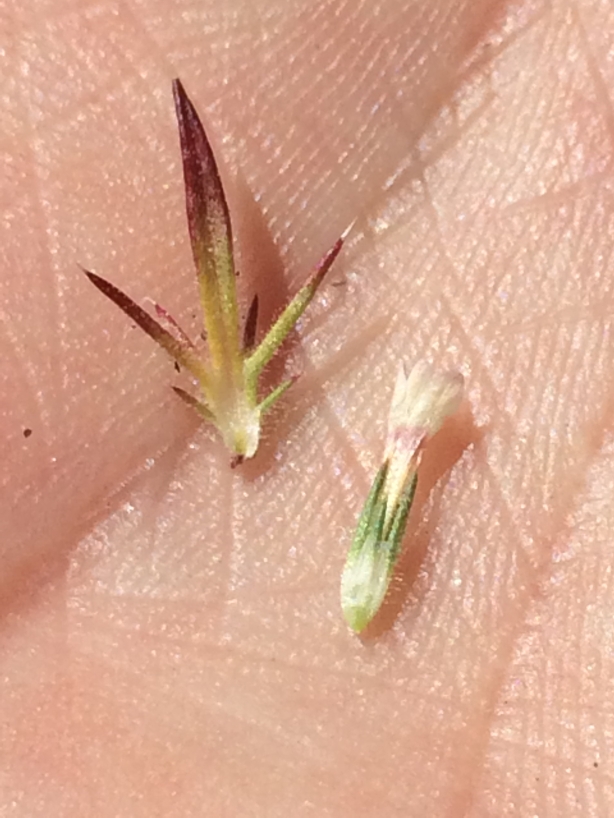I took an overnight trip into the beautiful mountains of Ventura County (with a brief detour back into San Luis Obispo County). Throughout most of California, Mountain Ranges run north to south, along faults formed by the collision of the Pacific and North American Plates (in Northern California, a third, more ancient plate, the Juan de Fuca, gets involved as it slowly submerges beneath the other two). In Southern California, from roughly the cities of Santa Barbara to Palm Springs, the edges of the plates jog east. Here, they “transverse” the state and form the east-west running San Bernardinos, the San Gabriels, and a jumble of ridges known as the Western Transverse Ranges. The botany in all three is great. I’ll return to the former two next week. This weekend I took a couple hikes in the later–one North of Ojai in the Southern edge of these ranges, and another in the Sespe Wilderness, pretty much smack in their heart. Both hikes included beautiful scenery and excellent, well-maintained trails. And both were surprisingly devoid of other hikers for a lovely weekend in early summer, especially considering their nearness to population centers.
Okay, onto the flowers. I’m starting to amass quite a collection of photos on this site. In fact, I’ve already posted photos of congeners (species in the same genus) for all ten of the following. I thought it would be fun to order these flowers from least to most commonly posted, as well as give a sense for how many species I have left to find.
Acanthomintha obovata cordata (Heart-leaved Thornmint, Lamiaceae). 1 previous species posted on this blog, 4 total species in California, none anywhere else. All four thornmints are uncommon or rare globally, but they can form huge populations. The patch of plants were I took this photo had hundreds of thousands of individuals, carpeting an entire hillside. Check out the amazing spiky bracts (modified leaf below each flower).

Frasera neglecta (Pine Green-Gentian, Gentinaceae). 1 previous, 6 total in CA, 15 globally (all in temperate North America). Many species in this genus have green nectaries bordered by hairs in the center of the petals.
Keckiella cordifolia (Climbing Penstemon, Plantaginaceae), 1 previous, 7 in CA and globally. This genus is closely related to the much more diverse Penstemon (total 250 species, several of which I have also photographed). This plant was common around Ojai, growing vine-like over the shrubs in the chapparal.

Abronia pogonantha (Mohave Sand-verbena, Nyctaginaceae), 2 previously posted (and I posted two others to Facebook before starting this blog), 8 in CA, 25 total, all in Western North America.

Eriogonum kennedyi (Kennedy’s Buckwheat, Polygonaceae). 3 previous, 119! species in California (and that’s not even getting into the numerous named varieties for many of the species), 250 total, all in North America. This is one of the largest genera in California and percentage-wise, clearly a group I’m biased against photographing. Many species simply aren’t that showy and they are often quite difficult to identify. This species, however, has a unique mat-forming habit (way of growing). Some of the plants were much larger, forming large splotches of gray-green over flat, pebbly areas in the Sespe Wilderness
Leptosiphon liniflorus (Line-flowered Leptosiphon, Polemoniaceae). 8 previously posted, 29 in CA, and only 1 species from elsewhere. This is one of the more widely distributed species. Conversely to the previous, I’m definitely biased toward this genus (and in fact this whole, beautiful family), explicitly seeking out species on my rambles.

Allium howellii clokeyi (Mount Pinos Onion, Alliaceae). 11 previous, 53 in CA (including some non-native species), 700 species throughout the North Temperate regions of the globe. This plant is only found in the Northern part of the Western Transverse Ranges, but it was abundant in the area. Check out the mating Midges (Chironomidae) at the top of the picture.

Finally, lets get to species in two genera that are clearly obsessions. Calochortus palmeri (Palmer’s Mariposa Lily, Liliaceae). 16 previous, 45 in CA, 67 total, with almost all in Western North America.

And two more Phacelias: Phacelia grandiflora (Largeflowered Phacelia) and Phacelia viscida albiflora (White-flowered Sticky Phacelia, Boraginaceae). These are the 23rd and 24th species out of 95 in California and 175 total that I have posted.
Even for these camera-hogging genera, I’ve only posted about a third of the species found in California. It will take many more rambles before I run out of new beauties!
















































































































